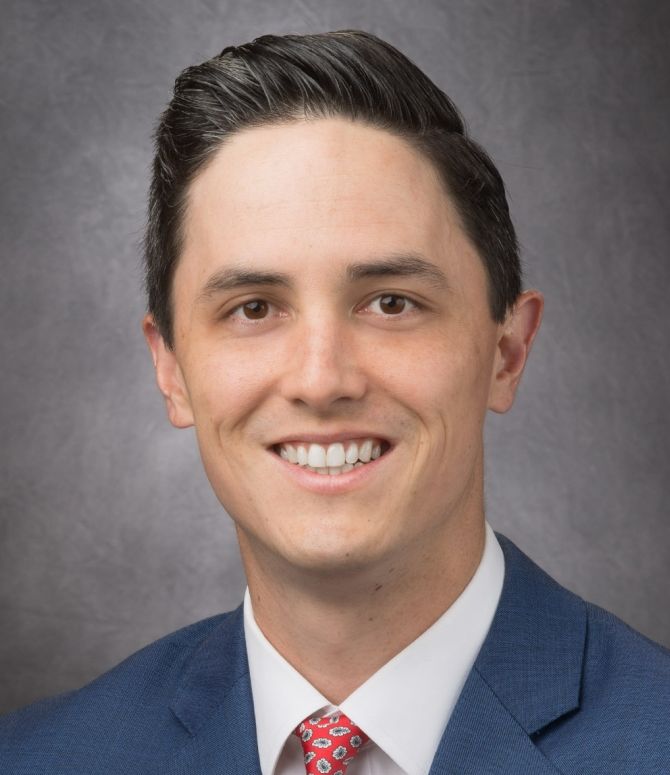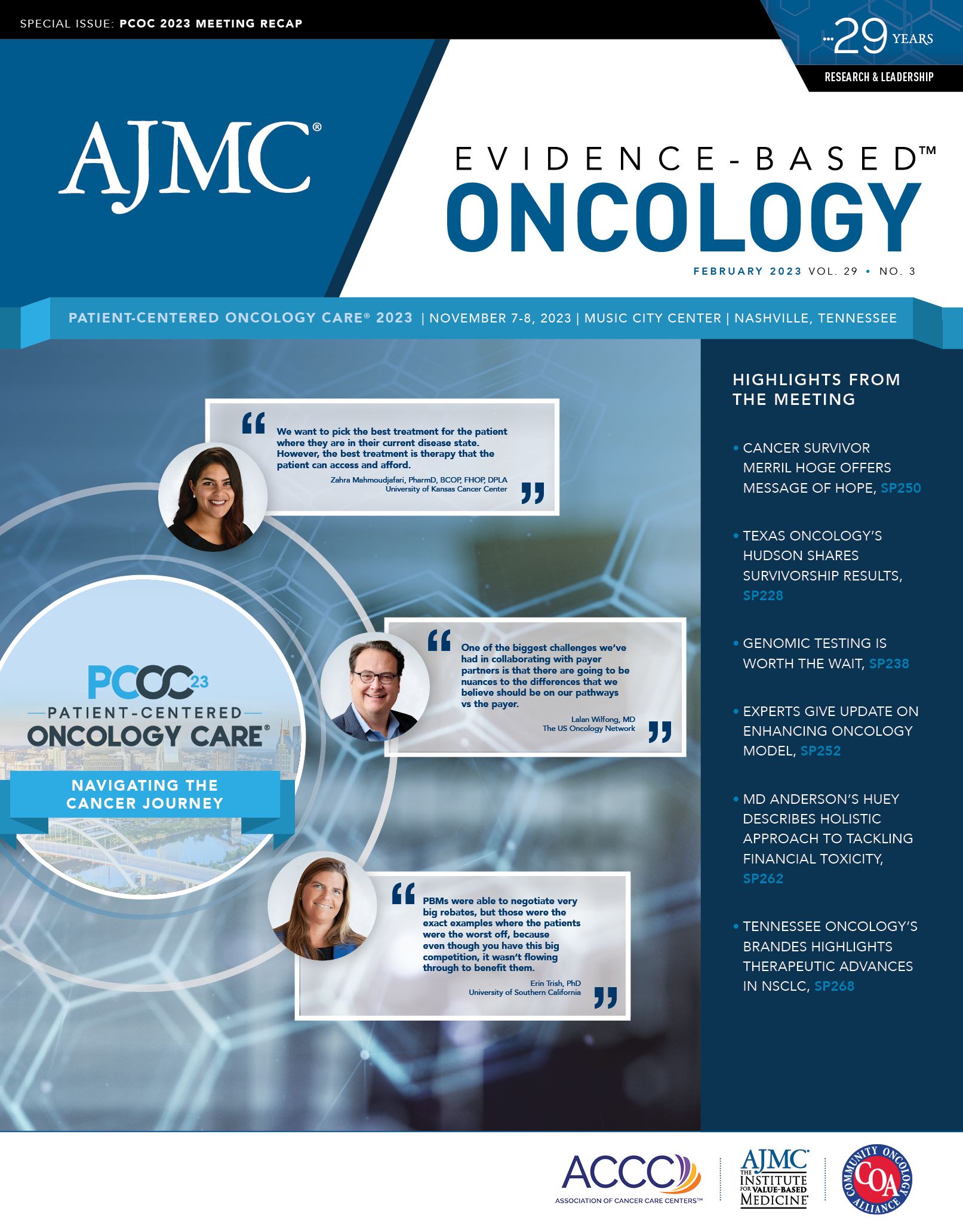- Center on Health Equity & Access
- Clinical
- Health Care Cost
- Health Care Delivery
- Insurance
- Policy
- Technology
- Value-Based Care
"Interventions Are Needed at Every Step"
MD Anderson's Ryan Huey, MD, offers a survey of research on a holistic approach to addressing financial toxicity during Patient Centered Oncology Care 2023.
The challenges of the cost of cancer care, according to Ryan Huey, MD, MS, cannot be addressed just by tackling drug prices, assisting with travel, or finding insurance coverage for a patient.
Ryan Huey, MD, MS | Image: MD Anderson

Barriers to care are so complex that each patient’s situation must be addressed in a holistic way, Huey said, because financial toxicity in cancer care affects not only quality of life but also outcomes. Huey is an assistant professor in the Department of Gastrointestinal Medical Oncology at The University of Texas MD Anderson Cancer Center in Houston.
“Interventions are needed at every step,” he said, ahead of a discussion at Patient-Centered Oncology Care that would include a patient affected by the costs of taking part in a clinical trial.
Huey, who has worked on quality care issues at MD Anderson, offered an example of a 57-year-old man who received a diagnosis of metastatic colorectal cancer. The man was working, but he was uninsured. Right now, Huey said, the system doesn’t account for a patient in these circumstances.
“Far too many times, we look for loopholes in the system we have,” he said. “Many people would counsel this gentleman to quit his job so he could then get coverage through the county hospital, because he made too much money to get complete coverage or even discounted coverage.”
Huey discussed the results of several well-known studies that showed the fallout from financial toxicity: 20% to 30% of patients skipped or delayed filling cancer medications to save money,1 68% of patients cut back on leisure activity or spending on food, and 70% sold property to pay for cancer care, making them twice as likely to have lower mental, emotional, and social well-being.2 Patients with cancer who file for bankruptcy have higher mortality rates than those who don’t file.3
And it’s not just anticancer drugs that tax patients’ finances. “There’s a growing body of evidence that talks about the supportive care medications, those that you would take to treat the nausea, treat the diarrhea, treat the fatigue, treat the neuropathy—the [adverse] effects of having cancer and undergoing chemotherapy,” Huey said, pointing to a graph that showed the cost per patient is approximately $1500 per month.4 Doctors warn patients to not fill their prescription if the blood thinner they prescribe costs too much—they will call in something else, he noted.
“This is the sad reality of where we are,” Huey said. “We don’t have great mechanisms to solve this problem right now.”
There has been a surge of GoFundMe accounts set up for medical care, he said, and cancer is the No. 1 impetus for these campaigns.5 “GoFundMe is not a great way to find health care,” he said.
Enrolling in a clinical trial can help with some costs, but many costs are not covered, such as additional screenings or biopsies or staying in a hotel. A survey by Texas Medical Center found half these patients had out-of-pocket nonmedical costs of more than $600 a month,6 Huey said. And coverage trends are shifting many drugs to the pharmacy benefit, with higher out-of-pocket costs and administrative headaches, he noted.
What can be done? Going back to the patient with newly diagnosed colorectal cancer, Huey said the best solution is comprehensive intervention with financial navigation. He offered a couple of examples, as follows:
The IMPACT (Improving Patient Access to Cancer Clinical Trials) program administered through the Lazarex Cancer Foundation in California covers out-of-pocket expenses for patients in clinical trials with income up to 700% of the federal poverty level; 51% of those enrolled in the program were non-White, compared with 28% of comparable trial participants.7
At Atrium Health Levine Cancer Institute in Charlotte, North Carolina, a comprehensive financial intervention with a multistakeholder team improved both quality of life and caregiver experiences while optimizing an average of $2500 in insurance coverage savings for participants.8
“We have to figure out how to implement this on a wider scale basis,” Huey said. “And we have to figure out how to create policies…so that we can help more patients.”
References
1. Zafar SY, Peppercorn JM, Schrag D, et al The financial toxicity of cancer treatment: a pilot study assessing out-of-pocket expenses and the insured cancer patient’s experience. Oncologist. 2013;18(4):381-390. doi:10.1634/theoncologist.2012-0279
2. Smith GL, Lopez-Olivo MA, Advani PG, et al. Financial burdens of cancer treatment: a systematic review of risk factors and outcomes. J Natl Compr Canc Netw. 2019;17(10):1184-1192. doi:10.6004/jnccn.2019.7305
3. Ramsey SD, Bansal A, Fedorenko CR, et al. Financial insolvency as a risk factor for early mortality among patients with cancer. J Clin Oncol. 2016;34(9):980-986. doi:10.1200/JCO.2015.64.6620
4. Gupta A, Jensen EH, Virnig BA, Beg MS, Time-related burdens of cancer care. JCO Oncol Pract. 2021;18(4):245-246. doi:10.1200/OP.21.00662
5. Angraal S, Zachariah AG, Raaisa R, et al. Evaluation of internet-based crowdsourced fundraising to cover health care costs in the United States JAMA Netw Open. 2021;4(1):e2033157. doi:10.1001/jamanetworkopen.2020.33157
6. Huey RW, George GC, Phillips P, et al. Patient-reported out-of-pocket costs and financial toxicity during early-phase oncology clinical trials. Oncologist. 2021;26(7):588-596. doi:10.1002/onco.13767
7. Medina SP, Zhang S, Nieves E, et al. Experiences of a multiethnic cohort of patients enrolled in a financial reimbursement program for cancer clinical trials. JCO Oncol Pract. 2023;19(5):e801-e810. doi:10.1200/OP.22.00429
8. Edward JS, McLouth LE, Rayens MK, Eisele LP, Davis TS, Hildebrandt G. Coverage and cost-of-care links: addressing financial toxicity among patients with hematologic cancer and their caregivers. JCO Oncol Pract. 2023;19(5):e696-e705. doi:10.1200/OP.22.00665

